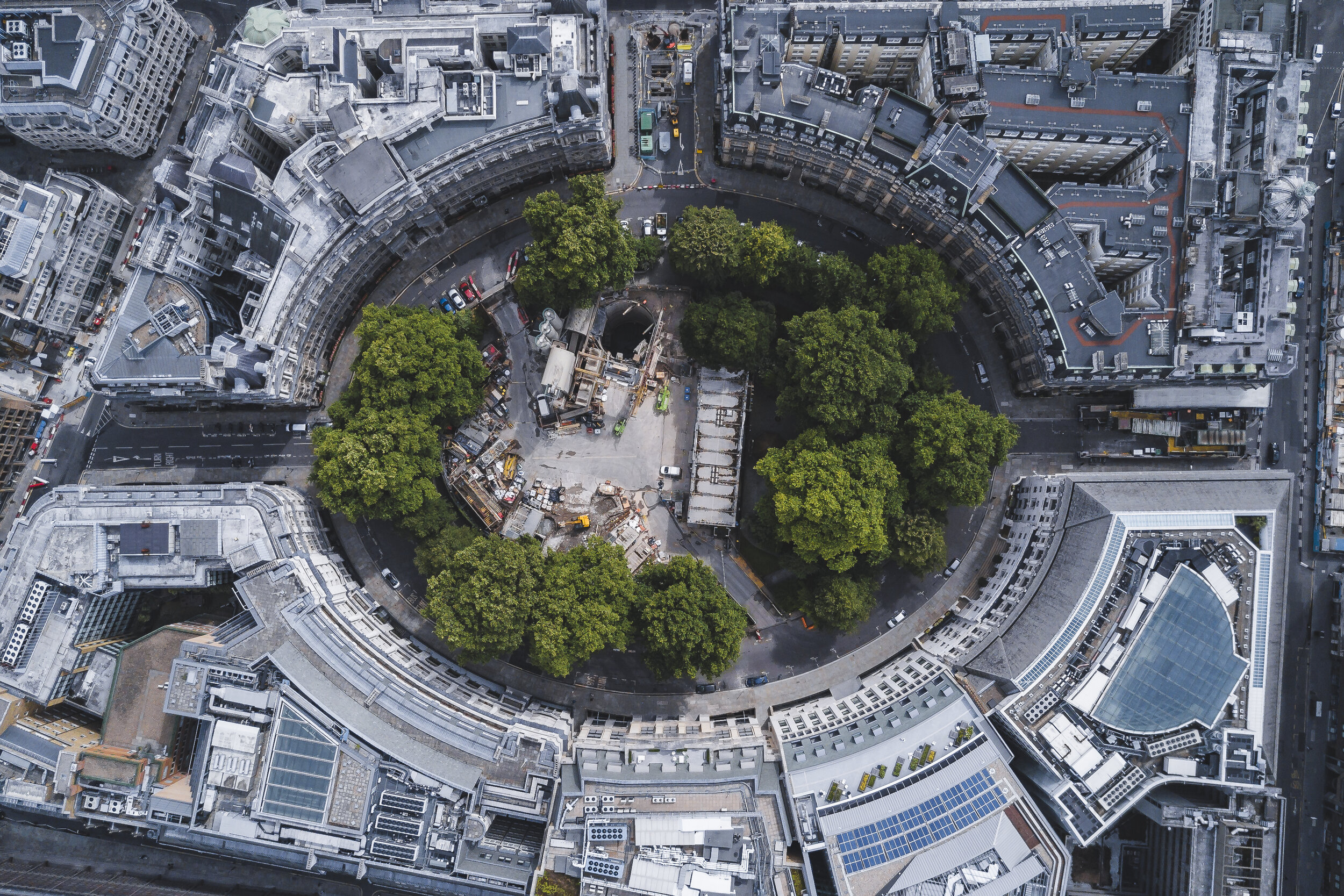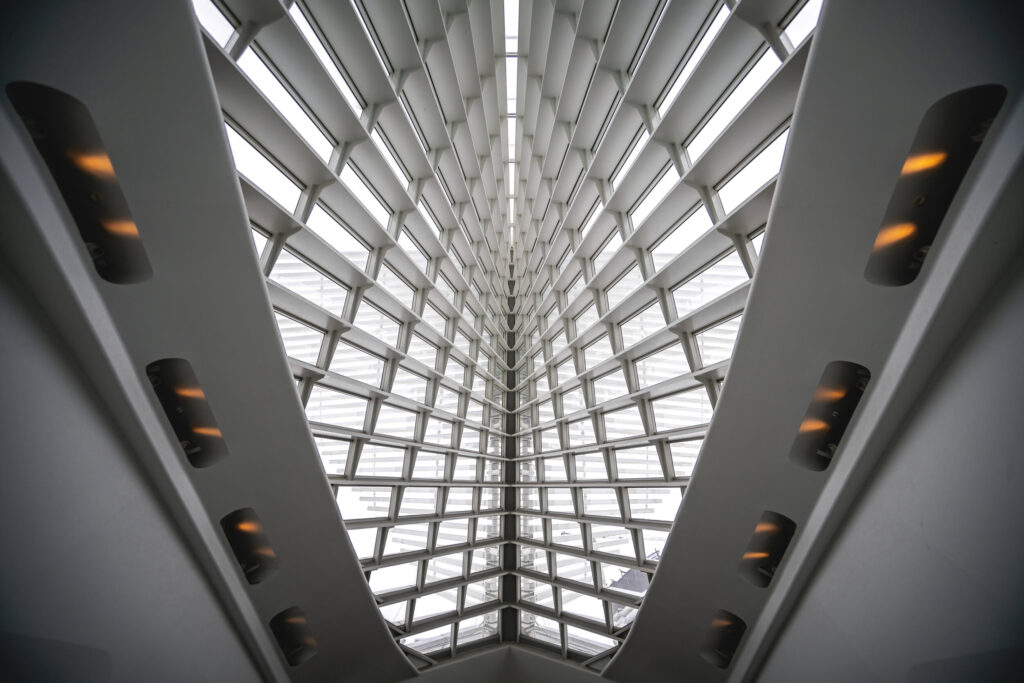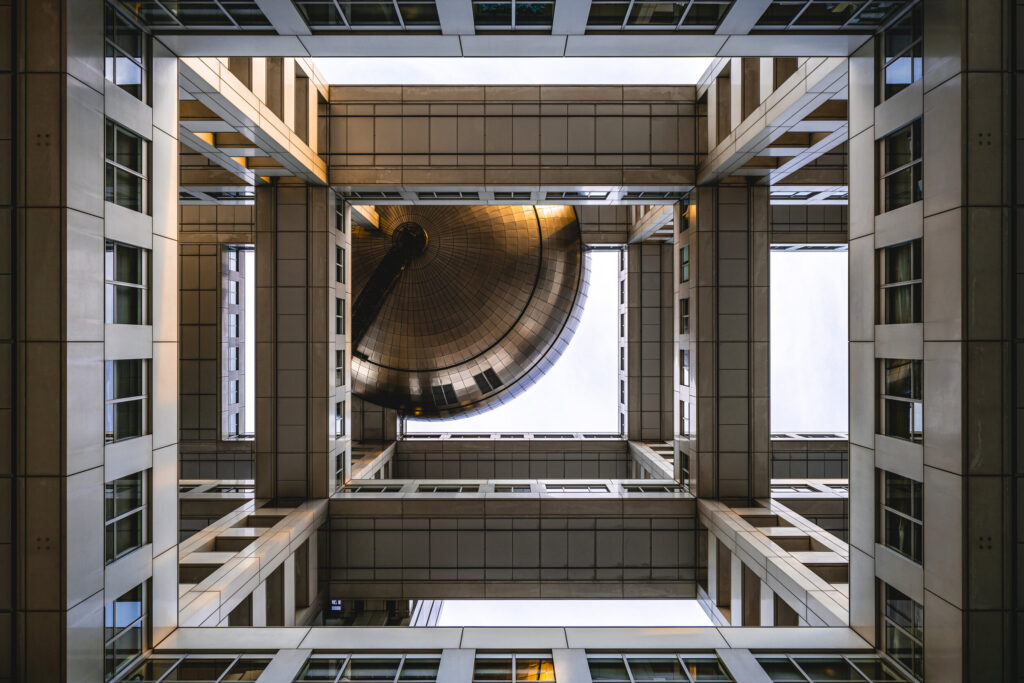Tobi Shinobi

“Shoot what you love and love what you shoot”
Self-taught and award-winning photographer Tobi Shinobi has worked in many major cities around the world. He is known for his distinctive images of architecture and symmetry for which he gained recognition on social media. Born in East London, Shinobi worked as a litigator before his hobby of snapping pictures on his camera phone became his full-time job. Now, when he’s not jetting off around the world and working on commissions for companies like Apple, Audi and Coach, he haunts the streets of Chicago, capturing the city with his unique style of street photography. NR Magazine joined the photographer in conversation.

What is it that makes a good photograph stand out from the rest, particularly with the over-saturation of photography that we see on social media every day?
I really appreciate great composition, something that catches you almost immediately. Though the photo doesn’t need to be technically perfect to be great, it helps if the photographer takes the time to nail the focus and avoid distracting features which can detract from the ‘illusion’ that the picture aims to create. When I take a picture I’m trying to get you to see what I see and bring you into my world, distractions destroy the seamless transition from someone’s reality to my surreality. With that being said, a good photo can be portraiture, street, architecture, or a great shot of an event: it doesn’t matter – a good photo just catches you.
Does your approach to your photography change depending on which city you are working in and if so how?
My approach doesn’t change particularly unless I have to be particularly mindful of my surroundings. Some places that I have been aren’t the most visitor-friendly tourist spots, so sometimes I have to be aware. With that being said the usual respect and appreciation for the locals and their customs and some good old fashioned street smarts has kept me in good graces. There are many times when I capture street photography and locals don’t necessarily appreciate their photo being taken and I respect that entirely.
What was the most exciting project you worked on and why?
Honestly, I don’t have a single project that I can point to that has been the most exciting one. I have been blessed with a lot of cool experiences, I guess I can say working with Sony last year, I was in front of the camera for a shoot for the launch of their long-awaited A7s3. It was a secret so I couldn’t tell anyone and one or two of my shots actually made it into the final video. I was also featured in front of the camera for Lightroom, as one of their ambassadors, showcasing my architectural photography around Chicago. Both great experiences during a challenging year.
You were a lawyer before you became a freelance photographer. Does your background in law ever influence your photography work and if so how?
Up until very recently, the vast majority of my work has focused on balance and perspectives. In a literal sense, this has presented itself as a heavy focus on symmetry and geometry. My fascination with these themes forms the basis for my first solo photography book Equilibrium. The metaphor of balance in my work shows up in a number of ways. One example is one is that there have been occasions when it would seem that my work appeared to be too “urban” to be mainstream and too mainstream to be “urban”. To bring it back to the question, the theme of perspectives comes from my legal background where I learned to always consider the other side’s ‘arguments’. I had to consider other people’s points of view, so as to be armed with the best argument. Similarly, symmetry can be seen as me trying to get my visual message across, in as straightforward a way as possible.
“These themes have also been a subtle nod to me seeking to address the imbalances I come across in life. Namely my own personal challenge of feeling that I don’t quite fit in, no matter where I am.”

With photo-sharing apps like Instagram getting your photography out there has become easier and easier. However, do you think there are negative sides to apps like these and if so what?
Apps like Instagram have great upsides, it’s important for me to say as much, given how much it has changed my life for the better but there are also some challenges that come with it. The mental strain that comes from the pressure to always produce quality work is a lot. The algorithm rewards consistency. Artists aren’t factories that can just churn out work. We need time to live life, learn, laugh, loathe and then live some more. Consistency is only sustainable for so long. I hope app and platform developers start to realize the strain that they are putting on artists and act accordingly.
Are there any photographers and artists that you draw inspiration from or are particularly interested in?
One of my favourites in recent years is Carlos Serrao, he is a photographer’s photographer and I am a big fan. I have also been blessed to be able to make a friend and mentor out of the legend that is Sandro Miller. A great human being and an awesome source of inspiration. I take inspiration from all over really. It could be music, religion, sport, film, comics, anime, art you name it. I just consume and then feel that creative spark to create my own and then share. I also take inspiration from the people around me which is why I think it is of the utmost importance to make sure that you surround yourself with positive, creative and inspirational people. I came across a quote the other day that said ‘show me your friends and I will show you your future,’ and I think there is some truth to this notion that the people you surround yourself with will have a profound effect on your outcomes.
You use drones for a lot of your shots. Do you find that the tightening restrictions around drone use, particularly in cities have hindered your work?
To be honest yes it has slowed things down but I understand why the authorities have had to take some of the steps that they have taken. Some people have little regard for others and have endangered some folk so the authorities were bound to clamp down on it.

What are some of the best spots in London for street photography?
I’d have to say that Shoreditch and Soho are the best spots in London for the best street photography. You can get some cool stuff in the Square mile too. An 85mm or a 50mm and you can capture some gold at the right time of day.
What advice would you give to young creatives who are interested in photography?
Keep shooting. Shoot what you love and love what you shoot. Spend more money on travel than you do on equipment. Chase the dream, not the competition. And by this I mean it is easy to just do what everyone else is doing in terms of your style and there is an element to which we learn from imitating others but at some point, you will need to discover and nurture your own style and not rely too heavily on the influences of all those if you want to stand out.

Are you working on any projects at the moment and what plans do you have for the future?
I’m always thinking about some project or another. I am going to keep on being the best Tobi that I can be. Continuing to evolve, marinating in my creative process. Really trying to sit on it and not force or rush it. That’s going to include video, music in some form, maybe collaborating with musicians. I have agency experience and I have the freelance experience. I do dig down and bury into the artist route or the employed route? I work in the Creative Lab at TikTok as a Creative Strategist, teaching big brands how to make. better TikToks. I want to collaborate with cool people around the world and enjoy all the opportunities that come with that. With everything opening back up I am in the process of planning what the next chapter looks like.
Credits
Images · Tobi Shinobi
http://www.tobishinobi.com/